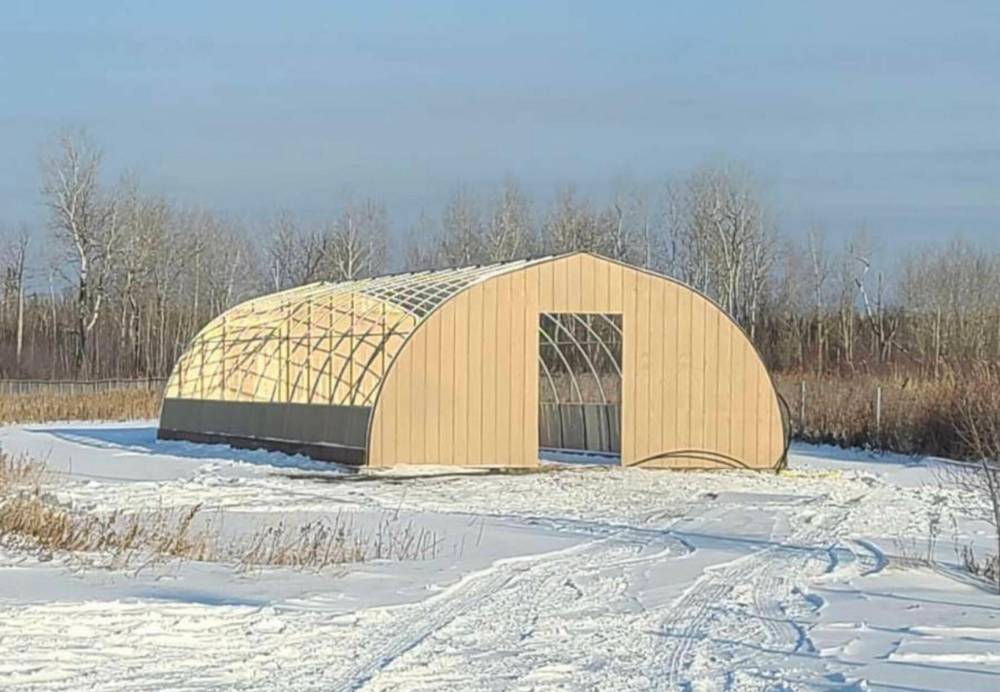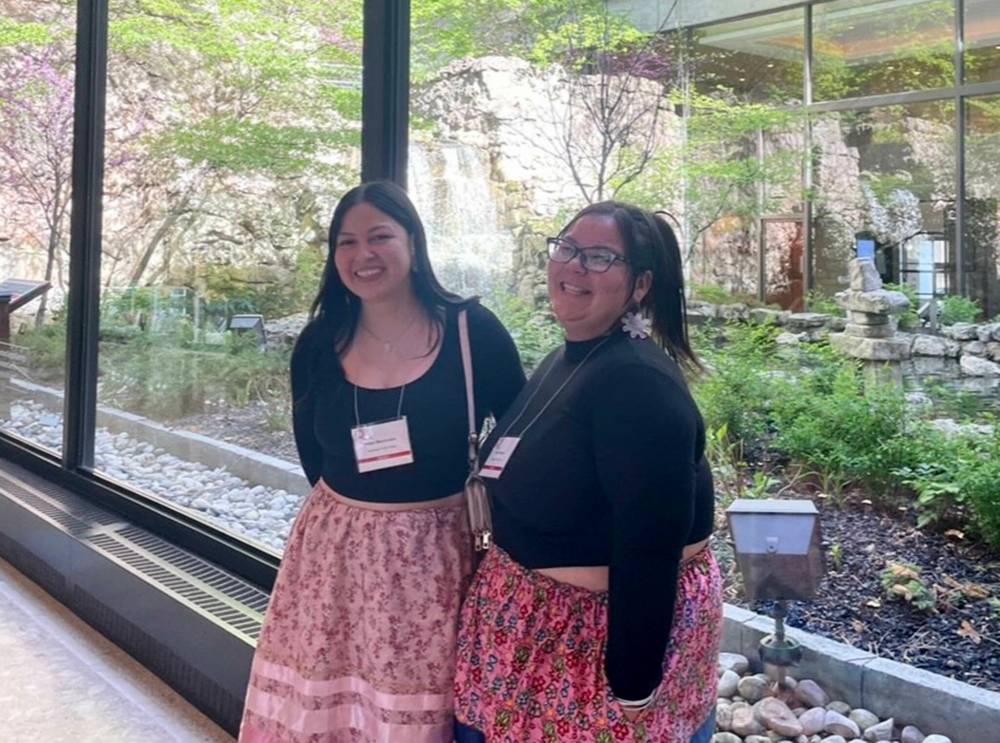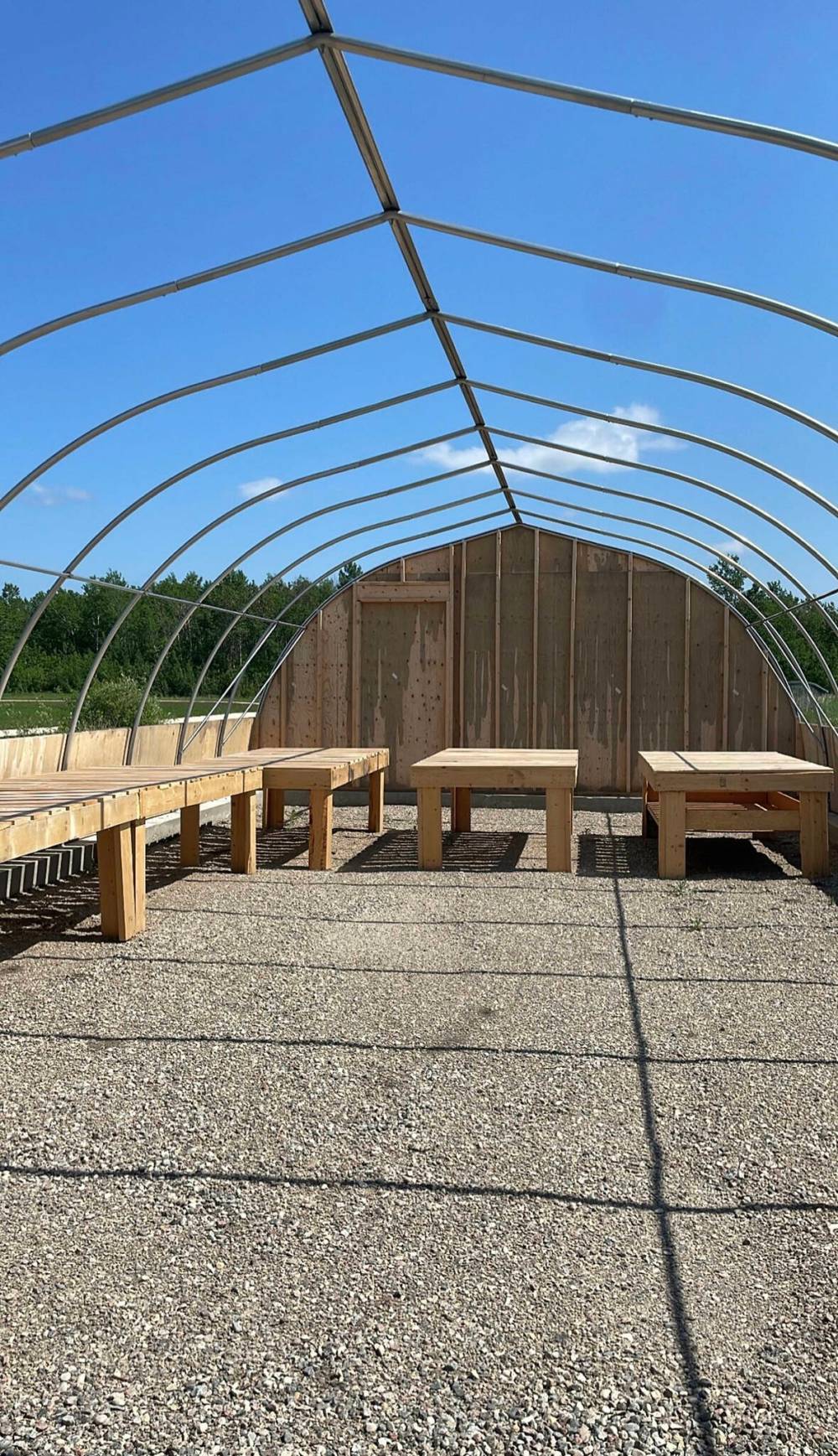Sagkeeng youth taking lead in clean-energy efforts
Advertisement
Read this article for free:
or
Already have an account? Log in here »
To continue reading, please subscribe:
Monthly Digital Subscription
$19 $0 for the first 4 weeks*
- Enjoy unlimited reading on winnipegfreepress.com
- Read the E-Edition, our digital replica newspaper
- Access News Break, our award-winning app
- Play interactive puzzles
*No charge for 4 weeks then billed as $19 every four weeks (new subscribers and qualified returning subscribers only). Cancel anytime.
Read unlimited articles for free today:
or
Already have an account? Log in here »
Hey there, time traveller!
This article was published 24/07/2023 (298 days ago), so information in it may no longer be current.
At Sagkeeng First Nation, a cohort of ambitious youth are leading the clean-energy movement.
After two years of hard work, a solar-powered greenhouse located at Sagkeeng Anicinabe High School will welcome community members through its eco-friendly doors Monday.
“This is the first solar panel building in our community,” said Tikkan Morrisseau, a project lead. “We wanted to promote healthy eating and connecting with the land again.”
SUPPLIED After two years of hard work, a solar-powered greenhouse located at Sagkeeng Anicinabe High School will welcome community members through its eco-friendly doors Monday.
For the past two years, Morrisseau, a team of Sagkeeng youth and several partners have been cultivating the roots of the greenhouse project. It all started four years ago when a cluster of young Sagkeeng members joined forces to create a community youth group.
“We started two garden projects in our community in 2019,” Morrisseau said. “They didn’t work out the way we wanted it to. At the time, we weren’t really experienced with running these types of projects.”
Their failed attempts at community gardens didn’t discourage them. A few years later, Sara Fontaine, a fellow youth-group member, approached Morrisseau with a fresh idea: what if they created a greenhouse instead?
From there, they applied for a $10,000 grant through the ImaGENation program, which later increased to $50,000. A generous donation from Powertec Electric and support through Sagkeeng Employment and Training Services helped compensate Indigenous youth for their labour.
SUPPLIED Tikkan Morrisseau (left) and Sara Fontaine. “This is the first solar panel building in our community,” said Morrisseau, a project lead.
Established in 2019, ImaGENation is a collaborative program for Indigenous Clean Energy, SevenGen Council and Student Energy that helps Indigenous youth launch clean-energy projects in their community. The initiative took off shortly after the 2019 SevenGen Indigenous Youth Energy Summit.
“What they saw within that summit and afterwards (was) a very deep passion from Indigenous youth to want to participate… but there wasn’t necessarily any mechanism to support Indigenous youth to lead their own project,” said Alexandra Thomson, the youth programming director at ICE.
To make the grants more accessible to Indigenous youth, the project criteria are purposefully broad. The important part is that it incorporates a clean-energy component, Thomson said.
From start to finish, mentors from relevant fields are recruited to help youth successfully implement their projects. Special funding is provided to allow youth to engage with elders.
SUPPLIED “The students there are going to be the ones that are running it every year,” Tikkan Morrisseau said. “It will also be a part of the curriculum.”
“In order to infuse Indigenous values into the project, we of course want to empower and encourage youth to engage with elders to make sure that the project is done in a meaningful and culturally respectful way,” Thomson said.
Morrisseau said the project wouldn’t exist without the backing of ICE and its team of mentors.
“They’re very supportive of us and our project,” she said. “(For) every issue we run into, we can just turn to them.”
When the greenhouse opens its doors in the coming days, it’ll bring more to the First Nation than just nutritious food. Learning and work opportunities will also be in season on the grounds, conveniently located at the Sagkeeng Anicinabe High School.
“The students there are going to be the ones that are running it every year,” Morrisseau said. “It will also be a part of the curriculum.”
In the aftermath of food shortages in the community brought on by the pandemic, Morrisseau believes the greenhouse will help residents be prepared for future disruptions. Now that chief and council have taken notice of the project, she’s optimistic that more clean-energy projects will pop up in Sagkeeng.
As Indigenous nations and urban centres alike look to transition towards cleaner, greener energy, Thomson believes youth are the ones paving the way.
“No matter their education level or their experience, there’s room for everybody to play a role in a just energy transition,” she said. “This is their future at stake.”
cierra.bettens@freepress.mb.ca


